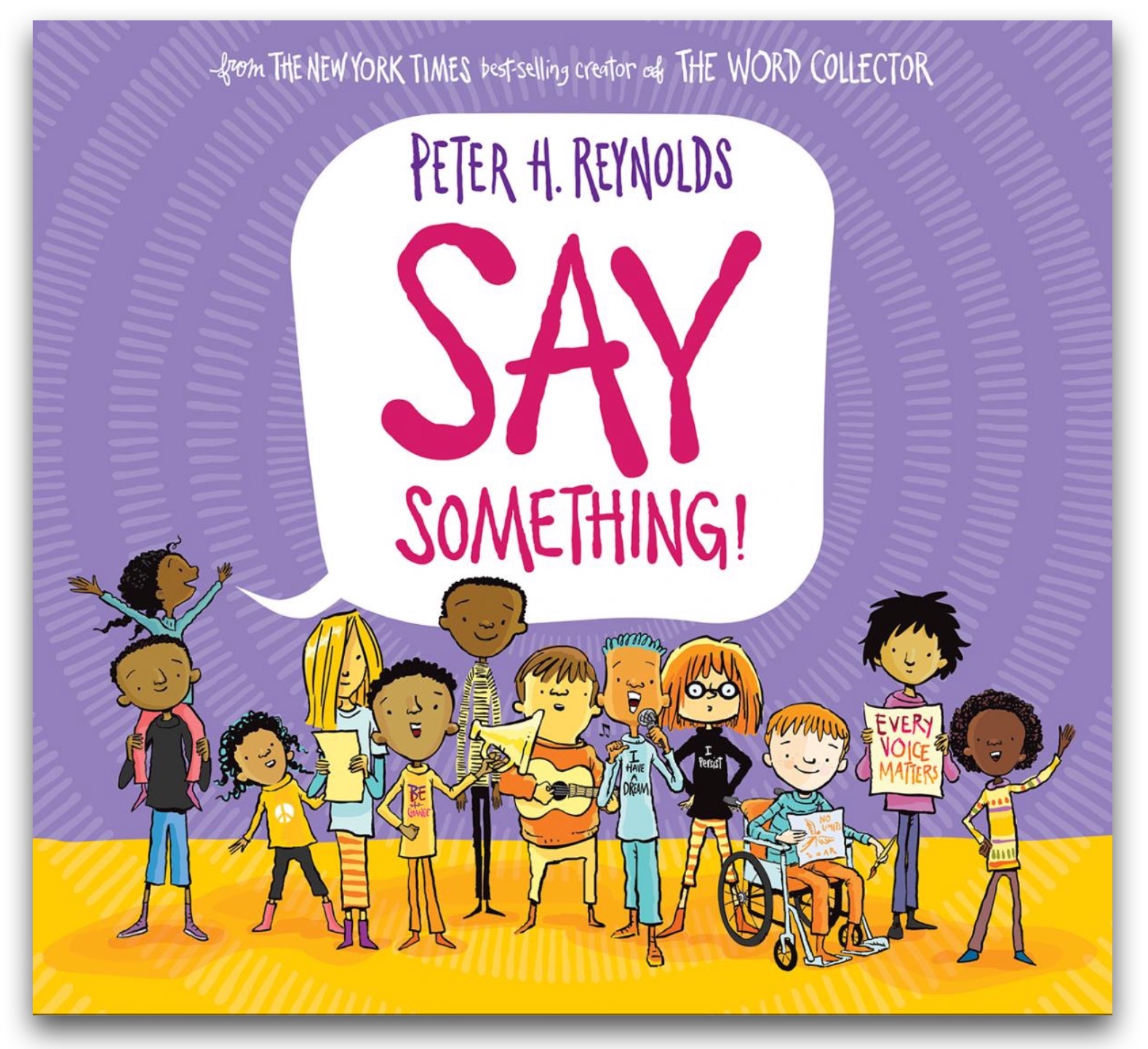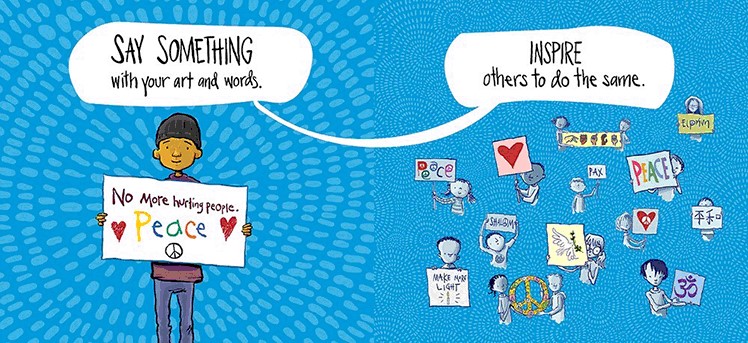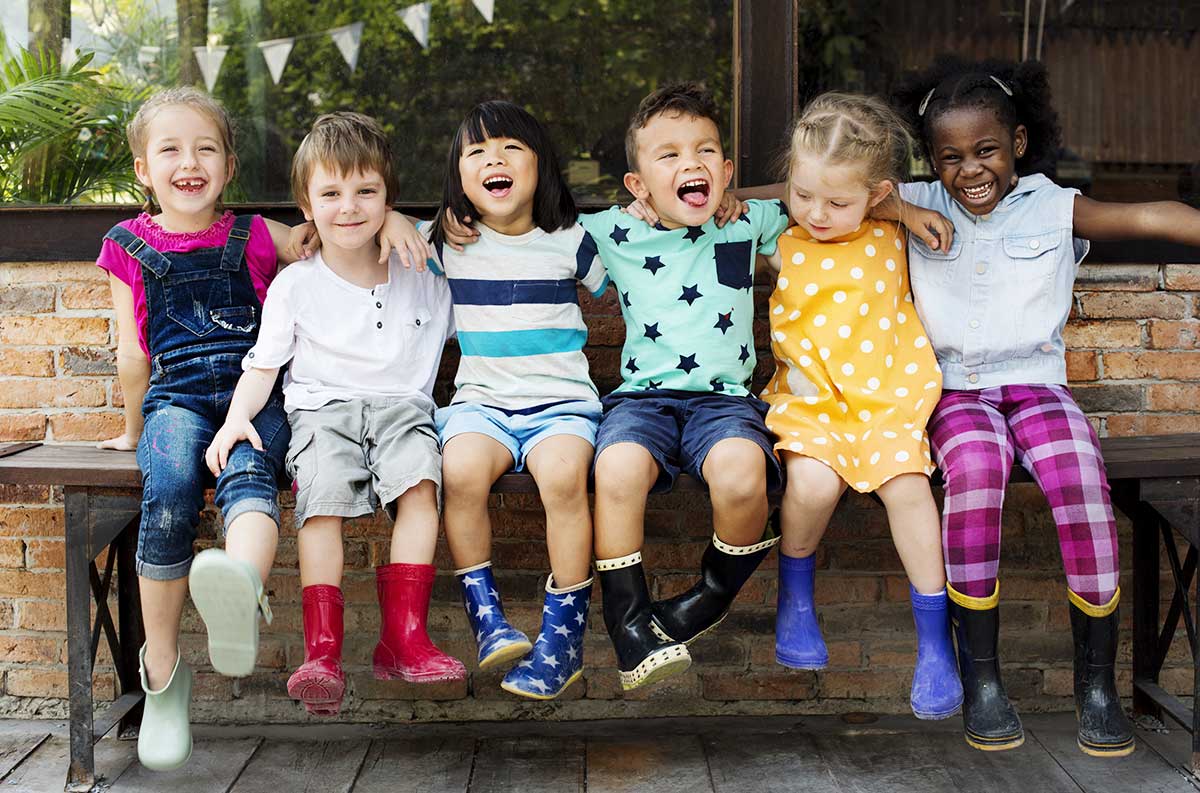
Inclusive Children's Book Teaching Guide
Say Something!
What is this book about?
The world needs your voice. If you have a brilliant idea, say something! If you see an injustice, say something! In this empowering picture book, author Peter H. Reynolds explores the many ways that a single voice can make a difference.
Each day, we have the chance to say something with our actions, our voices and our word choices. Perfect for kid activists everywhere, this timely story reminds readers of the undeniable importance and power of speaking up.
There are so many ways to tell the world who you are, what you are thinking, and what you believe. The time is now: SAY SOMETHING!
Who is depicted in this book?
- While this book does not directly explore diversity, it does depict children of varying backgrounds and abilities.
- Children who defy gender stereotypes
What early childhood themes and concepts does this book explore?
- Children’s voices and actions are important and have value.
- How children express feelings and creativity through painting, writing and wardrobe choices
- Standing up for others and our own beliefs, which are the foundations of allyship and action toward social justice
How does this book support anti-bias education?
By emphasizing the importance of unique individual voices, Say Something! gives young children the confidence to stand up for what is right. Teachers can use this book to introduce the concept of activism and empower children to stand up for themselves and others when confronted with injustice.
Depending on how the book is shared or used—and the developmental level of the children—the images and text may be used to support the following core goal from the book, Anti-Bias Education for Young Children and Ourselves:
Activism—Teachers will cultivate each child’s ability and confidence to stand up for oneself and for others in the face of bias so that children will demonstrate a sense of empowerment and the skills to act, with others or alone, against prejudice and/or discriminatory actions.
How can this book be used to meet early childhood learning standards?
For all ages
Use Say Something! to meet early childhood literacy standards >
For children from birth to age three
Teaching suggestion: During the book share and throughout the school day, point out ways that the book's characters and the children in your program are acting to produce positive outcomes. Use language that the youngest children can understand, such as "She helped her friend" or "It made her so happy to dress up in those clothes."
What Illinois Early Learning Guideline does this meet for children from birth to age three?
Developmental DomainApproaches to Learning
Standard: Curiosity and InitiativeChildren demonstrate interest and eagerness in learning about their world.
Indicators for children:
- Demonstrates an interest in new activities and a willingness to try out new experiences (16–24 months)
- Enjoys accomplishing simple goals (21–36 months)
Teaching suggestion: Point out instances when the children express themselves and offer support by interpreting their behavior for their peers, with comments such as "They are telling you that they don't like it when you do that" or "That's how they show you that they like you."
What Illinois Early Learning Guideline does this meet for children from birth to age three?
Developmental DomainSocial-Emotional Development
Standard: Relationship with PeersChildren demonstrate the desire and develop the ability to engage and interact with other children.
Indicators for children:
- Expresses frustration when another child takes something away (16–24 months
- Demonstrates enthusiasm around other children (16–24 months)
- Becomes frustrated with peers, such as yelling “No!” if a peer tries to interfere with an activity
- Communicates with other children in different settings
For preschoolers (ages three to five)
Teaching suggestion: After reading the story, ask the children to share the different ways that the characters spoke out and the reasons why they might have done so. Encourage the children to engage in role-play to demonstrate how to “say something” in various situations, such as when a friend is sad, when a friend hurts their feelings, or when a friend is not included in a game. Ask the children to share examples of situations when they felt that they had to “say something.” What were the outcomes?
What Illinois Early Learning and Development Standards does this meet for preschoolers?
The Arts Standard25BDisplay an awareness of some distinct characteristics of the arts.
Benchmark 25.B.ECa:
Describe or respond to their creative work or the creative work of others.
Teaching suggestion: Give the children a variety of art supplies (paints, clay, crayons, etc.) that they can use to express themselves. Discuss what they are "saying" with their creations.
What Illinois Early Learning and Development Standards does this meet for preschoolers?
Social/Emotional Development Standard31ADevelop positive relationships with peers and adults.
Benchmark 31.A.ECa:
Show empathy, sympathy, and caring for others.
See inside this book.

What other resources are available?
Say Something is also available in a Spanish edition, with the title ¡Di Algo!
